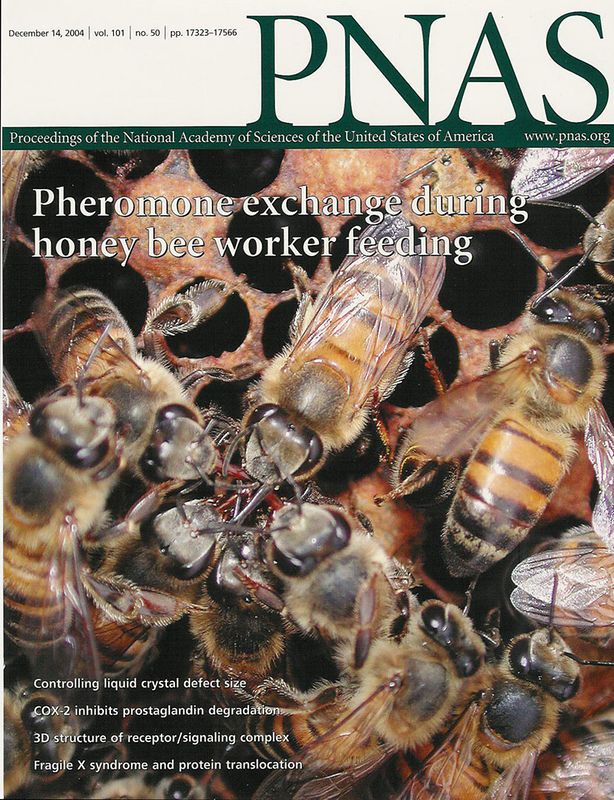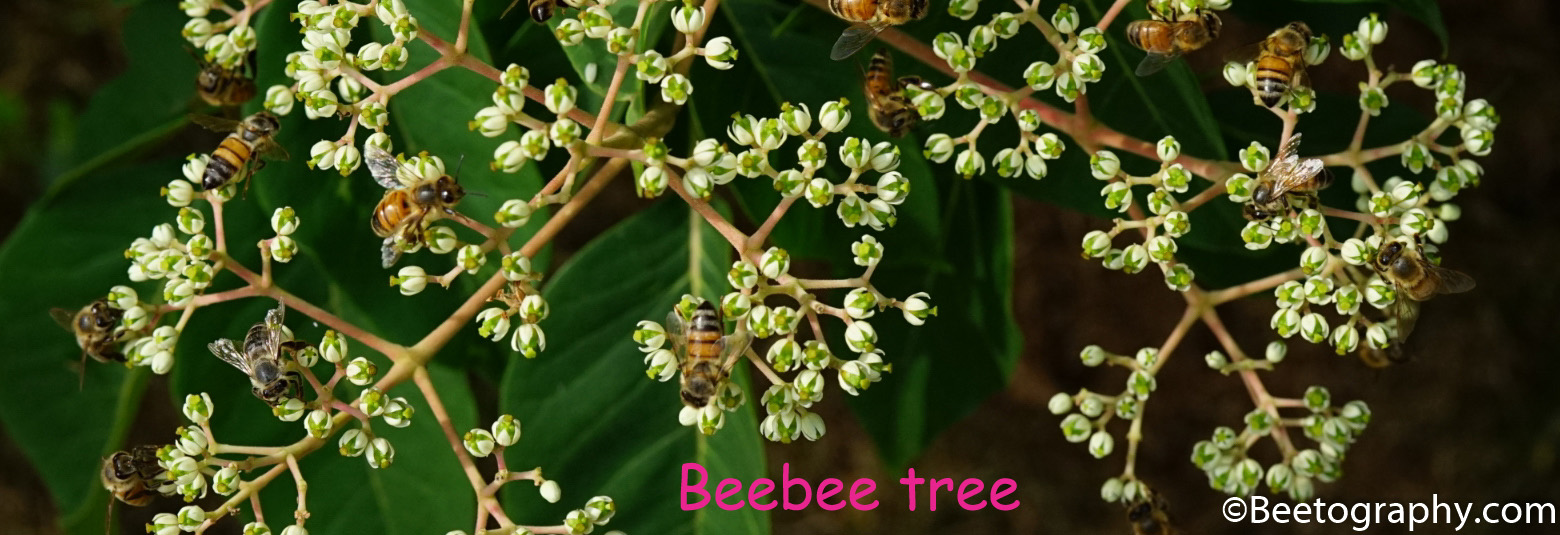Well, it is Valentines day (almost gone though) so I will post some photos of bee-kissing.
The technical term is actually trophallaxis — the exchange of food.
Honey bees do this pretty often, but most of the time you see one bee feeding another, occasionally you see 1 feeding 2 or 3.
I was lucky one time when I was in South Africa and saw this bee feeding another 4 and I snapped this photo, using a Nikon Coolpix 990 (point and shoot, 3.2 megapix). This was later published on the cover of PNAS.
1. one bee feeding 4 others, Apis mellifera scutellata.

I later tried to break this record (and also wanted to have a high resolution one using my D700) but spent more than 4 hours in one colony, but all I got was 1 feeding 3.
However this record was broken when one day I was working with bees in Canberra Australia. For some strange reason, that colony of bees, that particular day, was extremely prone to trophallaxis. Unfortunately I brought only my D70 (6 megapix), not my D700 (12 megapix) that day, but I did have my 60 mm macro with me though! Or I would be still regretting now.
2. This is what you normally see, bees doing their own beesiness.

3. 1 bee feeding another, this is quite easy to find in a 20,000 worker colony. On each side of a frame you can find 2-3 thousand workers and if you try hard enough you will find one pair. It does not have to be Valentine’s day!

4. Another pair, side view.

5. This bee must be quite attractive to others and she is now providing food (jelly? nectar? water?) to 2 others. 
6. I think it is still the same bee, now she is feeding 3.

7. Another foursome.

8. Now matching my African record, one feeding four.

9. I think the same bee as in #6/7, feeding four.

10. Yet a third group with 1 feeding 4.

11. Finally the record is broken! 1 feeding 5. This might be the maximum one bee can get? notice one bee was on top of others because there was not enough room. MAYBE they can do 1 against 6. now try to figure out who is the donor…

These Aussie bees must be highly amorous…one bee “kissing” 5 others simultaneously!
All the above photos were taken during the same session (1-2 frames from the same colony) in about 8 minutes.
Moral of the story: always bring your camera when opening a hive — you never know what good things might happen to you!
Happy Valentines Night! (do practice some trophallaxis…)

Hello Zachary,
These photographs and the text explaining trophallaxis are stunningly amazing. If I wanted to write about this that the bees do in our club magazine could I translate what you have written and use the photographs. I live in The Netherlands so would be translating from English into Dutch. I would say in the article what the source of the information and photographs are. With kind regards,
Lindy
I’m curious… are we sure it’s 1 bee feeding the others, or are the others transferring their haul to the one bee? IE Foragers transferring nectar to a house bee? Or vice versa… I notice that the single bee doesnt have tongue extended, but that the multiple bees all do. I also noticed in one of the shots that one of the multiple bees appears to be well older (darker) than the single bee making me think she’s the forager.
I’ve always assumed that for efficiency reasons a house bee would take nectar from several foragers before storing it, saving her trips.
Fantastic photos by the way!
nope, the one sticking her tongue out is the one who is drinking.
Zachary, Your photos are beautiful. May I have permission to use one of the “Trophallaxis” photos for a power point presentation that I am putting together for a local short course? You will, of course, receive credit.
Thank you!